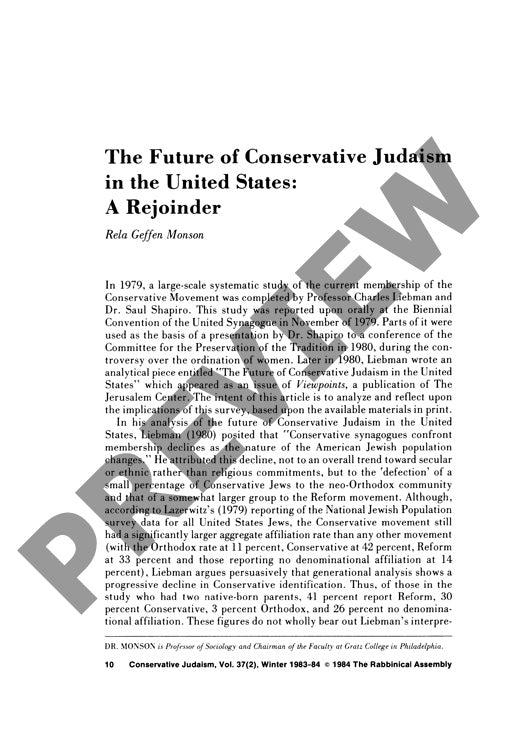The Future of Conservative Judaism in Th
Couldn't load pickup availability
Conservative Judaism's trajectory in America demands fresh analysis beyond Charles Liebman's influential but flawed 1980 study. While Liebman interpreted membership decline as primarily driven by defection to neo-Orthodox and Reform movements, his conclusions rested on problematic survey data from 1979 that captured only 28 percent of recipients (4,909 responses from 17,300 distributed surveys to United Synagogue congregations). The survey's methodological limitations - including sample biases skewing toward older demographics and an oversimplified focus on kashrut observance as a measure of religious commitment - call for significant reinterpretation. Rather than concentrating on stemming losses to neo-Orthodoxy, Conservative Judaism's growth potential lies in attracting right-wing Reform affiliates and unaffiliated Jews seeking religious structure. Liebman's characterization of Conservative leadership as insufficiently focused on observance levels misses this crucial strategic opportunity. Though the 1979 survey remains an important milestone in Conservative Judaism research, its methodological shortcomings and narrow analytical framework highlight the need for more nuanced scholarly investigation of American Jewish denominational dynamics.

More Information
-
Physical Description
-
Publication Information
Published 1983-1984
ISBN
-
Publication Credits
Rela Monson

